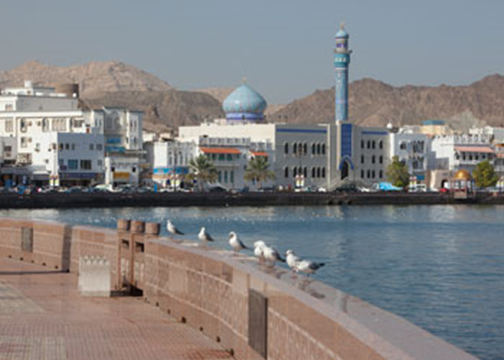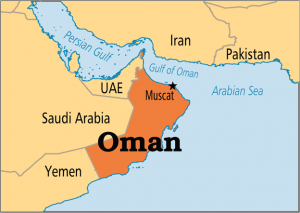 Muscat is the capital of the country of Oman. This port city presented quite a contrast to Mumbai. To make up for the disappointing experience when we docked at Mumbai, Captain Jonathan sped up the ship so passengers could have time in Muscat the evening before we were originally scheduled to dock. Passengers happily disembarked and rode shuttles to the “Souk” which is a busy popular market even at night.
Muscat is the capital of the country of Oman. This port city presented quite a contrast to Mumbai. To make up for the disappointing experience when we docked at Mumbai, Captain Jonathan sped up the ship so passengers could have time in Muscat the evening before we were originally scheduled to dock. Passengers happily disembarked and rode shuttles to the “Souk” which is a busy popular market even at night.
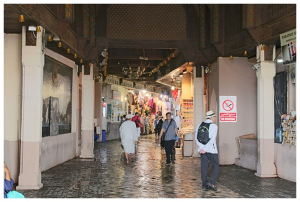
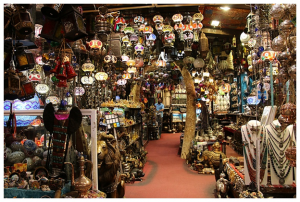
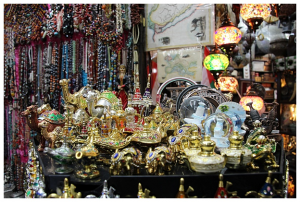
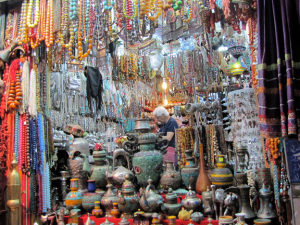
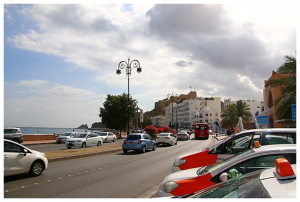
On the way out of the port gate, passengers were required to get out of the shuttle and walk through a terminal building. It was quick and easy. The unique feature of this modern pleasant building was a huge picture of the king. Yes, Oman is a kingdom. The current king put his father out of power in what has been referred to as a “bloodless coup.” To me, this sounded like the plot of a Shakespeare play.
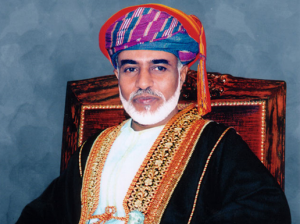
It is not hard to guess from the “Hop on/Hop off” title that passengers may get off at a stop and explore an area and then get on when another bus comes along. Mary and I did not exercise this option, but it was nice to know we could. I took pictures of very modern buildings and a freeway overpass that looked just like any in San Diego. If I were to summarize my impression of the desert city of Muscat in three words, I would say “clean, modern, prosperous.”
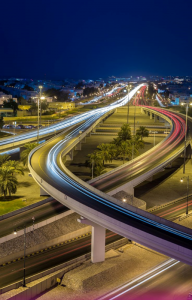 Mary and I did not just stop with the bus tour of the port city. In the afternoon, we went on an extraordinary boat tour. We re-boarded the ship for lunch then got on another bus which took us to a dock for an extremely pleasant boat ride around the rugged shore of Oman. When I say “rugged” I mean the very sharp pointed mountains came right down into the water. There was no hint of a beach anywhere.
Mary and I did not just stop with the bus tour of the port city. In the afternoon, we went on an extraordinary boat tour. We re-boarded the ship for lunch then got on another bus which took us to a dock for an extremely pleasant boat ride around the rugged shore of Oman. When I say “rugged” I mean the very sharp pointed mountains came right down into the water. There was no hint of a beach anywhere.
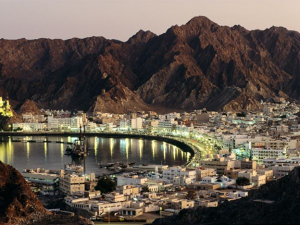
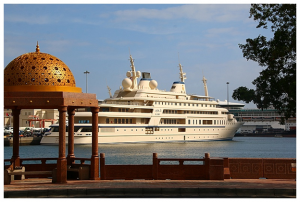
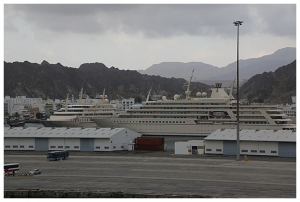
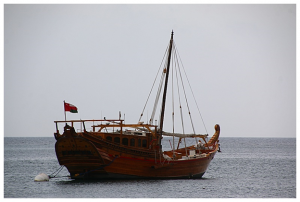
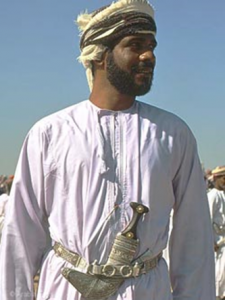
Oman was the first Arab country I had visited. I found it odd to see men in the floor length white robes and head pieces. (See editor’s note at end.) Our bus tour guide told us something about how he can distinguish where a man is from by the color of the headband but that was a little beyond me. As you might guess, the women were dressed in long black dresses and wore black head scarves.
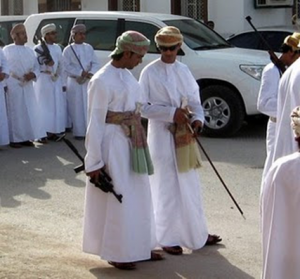
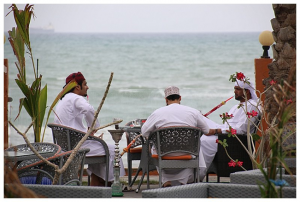
I am privileged to be an outsider who can come and visit a country very different than my own. I would encourage anybody to make such a visit and draw their own conclusions.
Editor’s note: Omani traditional dress. Almost all Omani men wear a dishdasha, a floor length robe which appears dazzlingly white, even on a herdsman who has been out all day on a dusty hillside. With it goes gorgeously ornate headgear. The younger men wear embroidered pillbox hats.
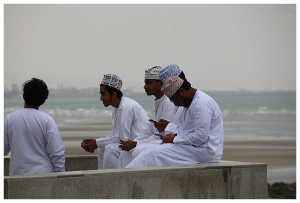
Helen is now on her way to Aqaba, Jordan and the purpose of their call, Petra. I’ve encouraged Helen, no matter what the cost, she must see Petra. Their route takes them south-west, paralleling the coast of Oman to a waypoint at the eastern end of the IRTC, (International Recommended Transit Corridor). This is a routing system for vessels going to, or from the Red Sea, regularly patrolled by warships. These also provide a convoy system for slower vessels and escort them down the IRTC. The ‘hotspot’ is Yemen, passing within 1½ miles at their closest approach, as they use the Traffic System lanes.

